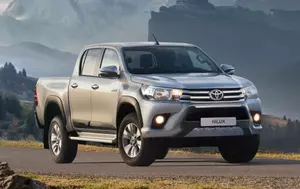
| Vehicle | Curb weight | Difference from world's smallest | Weight to power ratio | 0—60 mph acceleration ratio | Consumption ratio |
|---|---|---|---|---|---|
| 2.8d |
1955 kg / 4311 lbs |
1530 kg (3374 lbs) heavier | 11 kg to 1 hp | - | - |
| 2.4d |
1840 kg / 4057 lbs |
1415 kg (3120 lbs) heavier | 12 kg to 1 hp | - | - |
| 2.7i |
1755 kg / 3870 lbs |
1330 kg (2933 lbs) heavier | 11 kg to 1 hp | - | - |
| Hi-Rider 2.4d |
1935 kg / 4267 lbs |
1510 kg (3330 lbs) heavier | 13 kg to 1 hp | - | - |
| Hi-Rider 2.8d |
1930 kg / 4256 lbs |
1505 kg (3319 lbs) heavier | 11 kg to 1 hp | - | - |
| Vehicle | 2.8d |
|---|---|
| Curb weight |
1955 kg / 4311 lbs |
| Difference from world's smallest | 1530 kg (1530 lbs) heavier |
| Weight to power ratio | 11 kg to 1 hp |
| 0—60 mph acceleration ratio | - |
| Consumption ratio | - |
| Vehicle | 2.4d |
| Curb weight |
1840 kg / 4057 lbs |
| Difference from world's smallest | 1415 kg (1415 lbs) heavier |
| Weight to power ratio | 12 kg to 1 hp |
| 0—60 mph acceleration ratio | - |
| Consumption ratio | - |
| Vehicle | 2.7i |
| Curb weight |
1755 kg / 3870 lbs |
| Difference from world's smallest | 1330 kg (1330 lbs) heavier |
| Weight to power ratio | 11 kg to 1 hp |
| 0—60 mph acceleration ratio | - |
| Consumption ratio | - |
| Vehicle | Hi-Rider 2.4d |
| Curb weight |
1935 kg / 4267 lbs |
| Difference from world's smallest | 1510 kg (1510 lbs) heavier |
| Weight to power ratio | 13 kg to 1 hp |
| 0—60 mph acceleration ratio | - |
| Consumption ratio | - |
| Vehicle | Hi-Rider 2.8d |
| Curb weight |
1930 kg / 4256 lbs |
| Difference from world's smallest | 1505 kg (1505 lbs) heavier |
| Weight to power ratio | 11 kg to 1 hp |
| 0—60 mph acceleration ratio | - |
| Consumption ratio | - |
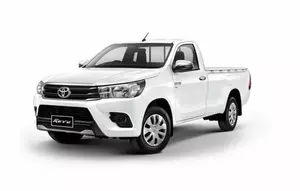
| Vehicle | Curb weight | Difference from world's smallest | Weight to power ratio | 0—60 mph acceleration ratio | Consumption ratio |
|---|---|---|---|---|---|
| 2.4d |
1570 kg / 3462 lbs |
1145 kg (2525 lbs) heavier | 10 kg to 1 hp | - | - |
| 2.7i |
1490 kg / 3285 lbs |
1065 kg (2348 lbs) heavier | 9 kg to 1 hp | - | - |
| 2.8d |
1795 kg / 3958 lbs |
1370 kg (3021 lbs) heavier | 10 kg to 1 hp | - | - |
| Vehicle | 2.4d |
|---|---|
| Curb weight |
1570 kg / 3462 lbs |
| Difference from world's smallest | 1145 kg (1145 lbs) heavier |
| Weight to power ratio | 10 kg to 1 hp |
| 0—60 mph acceleration ratio | - |
| Consumption ratio | - |
| Vehicle | 2.7i |
| Curb weight |
1490 kg / 3285 lbs |
| Difference from world's smallest | 1065 kg (1065 lbs) heavier |
| Weight to power ratio | 9 kg to 1 hp |
| 0—60 mph acceleration ratio | - |
| Consumption ratio | - |
| Vehicle | 2.8d |
| Curb weight |
1795 kg / 3958 lbs |
| Difference from world's smallest | 1370 kg (1370 lbs) heavier |
| Weight to power ratio | 10 kg to 1 hp |
| 0—60 mph acceleration ratio | - |
| Consumption ratio | - |
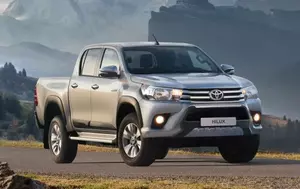
| Vehicle | Curb weight | Difference from world's smallest | Weight to power ratio | 0—60 mph acceleration ratio | Consumption ratio |
|---|---|---|---|---|---|
| Hi-Rider 2.8d |
1910 kg / 4212 lbs |
1485 kg (3275 lbs) heavier | 11 kg to 1 hp | - | - |
| 2.8d |
1895 kg / 4178 lbs |
1470 kg (3241 lbs) heavier | 11 kg to 1 hp | - | - |
| 2.4d |
1890 kg / 4167 lbs |
1465 kg (3230 lbs) heavier | 13 kg to 1 hp | - | - |
| Vehicle | Hi-Rider 2.8d |
|---|---|
| Curb weight |
1910 kg / 4212 lbs |
| Difference from world's smallest | 1485 kg (1485 lbs) heavier |
| Weight to power ratio | 11 kg to 1 hp |
| 0—60 mph acceleration ratio | - |
| Consumption ratio | - |
| Vehicle | 2.8d |
| Curb weight |
1895 kg / 4178 lbs |
| Difference from world's smallest | 1470 kg (1470 lbs) heavier |
| Weight to power ratio | 11 kg to 1 hp |
| 0—60 mph acceleration ratio | - |
| Consumption ratio | - |
| Vehicle | 2.4d |
| Curb weight |
1890 kg / 4167 lbs |
| Difference from world's smallest | 1465 kg (1465 lbs) heavier |
| Weight to power ratio | 13 kg to 1 hp |
| 0—60 mph acceleration ratio | - |
| Consumption ratio | - |

| Vehicle | Curb weight | Difference from world's smallest | Weight to power ratio | 0—60 mph acceleration ratio | Consumption ratio |
|---|---|---|---|---|---|
| 2.4 D-4D |
1800 kg / 3969 lbs |
1375 kg (3032 lbs) heavier | 12 kg to 1 hp | 144 kg/s (318 lbs/s) |
254 kg/L (560 lbs/L) |
| Vehicle | 2.4 D-4D |
|---|---|
| Curb weight |
1800 kg / 3969 lbs |
| Difference from world's smallest | 1375 kg (1375 lbs) heavier |
| Weight to power ratio | 12 kg to 1 hp |
| 0—60 mph acceleration ratio | 144 kg/s (318 lbs/s) |
| Consumption ratio |
254 kg/L (560 lbs/L) |
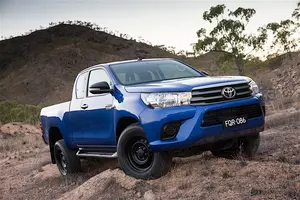
| Vehicle | Curb weight | Difference from world's smallest | Weight to power ratio | 0—60 mph acceleration ratio | Consumption ratio |
|---|---|---|---|---|---|
| 2.4 D-4D |
1915 kg / 4223 lbs |
1490 kg (3286 lbs) heavier | 13 kg to 1 hp | 153 kg/s (337 lbs/s) |
282 kg/L (622 lbs/L) |
| Vehicle | 2.4 D-4D |
|---|---|
| Curb weight |
1915 kg / 4223 lbs |
| Difference from world's smallest | 1490 kg (1490 lbs) heavier |
| Weight to power ratio | 13 kg to 1 hp |
| 0—60 mph acceleration ratio | 153 kg/s (337 lbs/s) |
| Consumption ratio |
282 kg/L (622 lbs/L) |
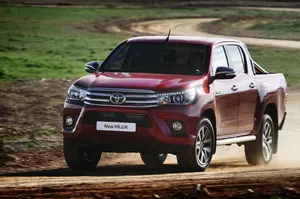
| Vehicle | Curb weight | Difference from world's smallest | Weight to power ratio | 0—60 mph acceleration ratio | Consumption ratio |
|---|---|---|---|---|---|
| 2.4 D-4D |
2095 kg / 4619 lbs |
1670 kg (3682 lbs) heavier | 14 kg to 1 hp | 172 kg/s (379 lbs/s) |
291 kg/L (642 lbs/L) |
| Vehicle | 2.4 D-4D |
|---|---|
| Curb weight |
2095 kg / 4619 lbs |
| Difference from world's smallest | 1670 kg (1670 lbs) heavier |
| Weight to power ratio | 14 kg to 1 hp |
| 0—60 mph acceleration ratio | 172 kg/s (379 lbs/s) |
| Consumption ratio |
291 kg/L (642 lbs/L) |
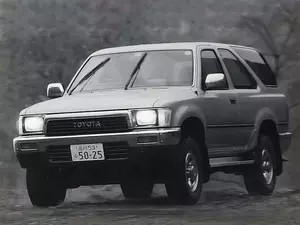
| Vehicle | Curb weight | Difference from world's smallest | Weight to power ratio | 0—60 mph acceleration ratio | Consumption ratio |
|---|---|---|---|---|---|
| 3.0 D |
1860 kg / 4101 lbs |
1435 kg (3164 lbs) heavier | 14 kg to 1 hp | - | - |
| Vehicle | 3.0 D |
|---|---|
| Curb weight |
1860 kg / 4101 lbs |
| Difference from world's smallest | 1435 kg (1435 lbs) heavier |
| Weight to power ratio | 14 kg to 1 hp |
| 0—60 mph acceleration ratio | - |
| Consumption ratio | - |